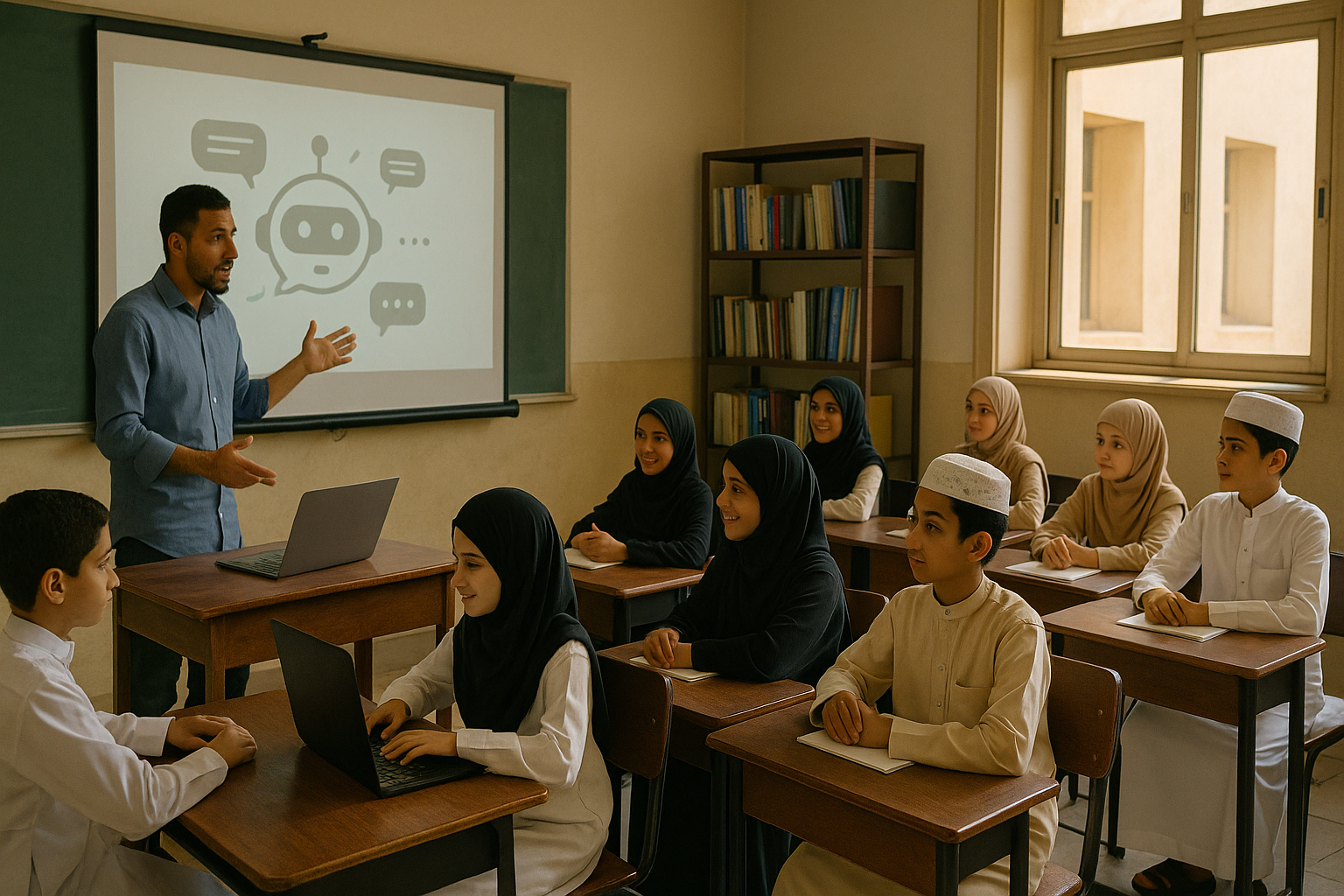Arabic Chatbots Emerge as the Next Big Step in Digital Education Reform
A study by Abdelmalek Essaadi University researchers reveals that Arabic educational chatbots are still in early stages, with few using advanced AI like GPT. It calls for stronger collaboration and larger Arabic language datasets to make digital learning more inclusive and effective across the Arab world.

The study "Arabic Chatbot Technologies in Education: An Overview", written by Hicham Bourhil and Yacine El Younoussi from Abdelmalek Essaadi University in Tetouan, Morocco, explores how artificial intelligence is reshaping education in the Arab world. It investigates how Arabic chatbots, AI-powered systems that can communicate with humans, are being used to assist students and teachers. The research also reveals a worrying gap: while chatbots in English and other major languages have evolved rapidly, Arabic chatbots are still in their early stages of development, held back by linguistic and technological challenges.
The Rise of Chatbots in Education
Chatbots, also known as conversational agents, are computer programs that use Artificial Intelligence (AI) and Natural Language Processing (NLP) to communicate with users through text or speech. These tools have become increasingly common in fields like healthcare, customer service, and tourism. In education, their popularity skyrocketed after the COVID-19 pandemic, when schools and universities had to move online almost overnight.
Teachers began using chatbots to answer students' questions instantly, guide them through online courses, and reduce the administrative workload. Students benefited from personalized support, especially those who felt shy about asking questions in class. Chatbots made learning more interactive, affordable, and accessible, especially in remote areas where teachers or tutors were not always available.
The Arabic Challenge
Despite Arabic being the fourth most used language on the internet and spoken by more than 400 million people, it still faces major obstacles in AI development. One of the biggest challenges, the study notes, lies in the complex nature of the Arabic language itself. Arabic exists in several forms: Classical Arabic (used in religious texts and literature), Modern Standard Arabic (MSA) (used in media and education), and colloquial dialects like Egyptian, Levantine, and Gulf Arabic. Each form has different grammar rules, pronunciation, and vocabulary, making it extremely difficult for AI systems to understand and respond naturally.
In comparison, English chatbots benefit from vast datasets and standardized grammar. For Arabic, there's still a shortage of large, well-organized datasets, known as corpora, that AI systems need to learn how to "speak" effectively. Without these resources, progress remains slow.
What the Study Found
The authors categorize chatbots into three main types. Rule-based chatbots follow fixed scripts and can only respond to specific inputs. Retrieval-based chatbots choose the best answer from a list of pre-written responses using pattern-matching techniques. The most advanced are generation-based chatbots, which rely on deep learning and machine learning to create new, dynamic responses similar to human conversation.
According to Bourhil and El Younoussi, most Arabic educational chatbots fall into the first two categories. Developers often use existing platforms like Google DialogFlow and RASA, which make it easier to design chatbots but limit how intelligent or adaptable they can be.
After reviewing existing research, the authors identified ten unique Arabic educational chatbots. Most of them use Modern Standard Arabic, only one uses Classical Arabic, and one uses a local Saudi dialect. Seven chatbots rely on retrieval-based methods, two were built using frameworks, and just one, NIA (2023), uses generative AI, the same type of technology behind advanced systems like ChatGPT. This shows that Arabic chatbots are still several steps behind in adopting modern AI techniques.
The Problem with Evaluation
The study also points out that most Arabic chatbots are evaluated using human feedback, such as user satisfaction surveys. While this helps understand how people feel about the chatbots, it's not always reliable or scientific. Different users have different expectations, and personal opinions can distort results. Only the latest chatbots, such as SEG-COVID and NIA, use automated performance metrics like accuracy, precision, and BLEU scores, the kind of measurements used in global NLP research.
The researchers argue that Arabic chatbot developers need to start using these standardized metrics so that systems can be compared and improved more consistently. They also stress the need for open collaboration between universities and AI developers to create shared benchmarks for quality.
Building the Future of Arabic AI
Bourhil and El Younoussi call the current state of Arabic educational chatbots "immature" but full of potential. They encourage researchers to embrace deep learning models like GPT and BERT, which have revolutionized language processing globally. However, the key to real progress lies in building large and diverse Arabic language datasets. These should include not just Modern Standard Arabic but also dialects and Classical Arabic to capture the full linguistic richness of the Arab world.
The authors also suggest stronger cooperation among Arab universities, research centers, and educational institutions. Joint efforts could help create more culturally aware and linguistically capable chatbots that serve local needs, virtual tutors that can explain lessons, provide real-time feedback, or even support students emotionally during remote learning.
The study ends on an optimistic note. It shows that the Arab world stands on the edge of a digital learning revolution. By investing in AI and data resources and by collaborating across borders, Arabic-speaking countries can create intelligent educational tools that speak their language, literally. These chatbots could bridge the digital divide, make learning more inclusive, and ensure that the Arabic language thrives in the age of artificial intelligence.
- FIRST PUBLISHED IN:
- Devdiscourse
ALSO READ
-
Amazon to cut 14,000 corporate jobs as it ramps up spending on artificial intelligence, reports AP.
-
Artificial intelligence strengthens fiscal transparency in public finance
-
From data to safety: Artificial intelligence transforms coal mine risk management
-
How artificial intelligence can build trust and counter misinformation in crises
-
AI chatbots emerge as lifelines for women facing gender-based violence








